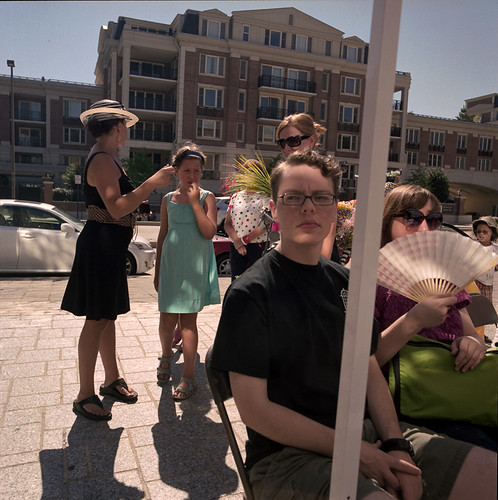When I started taking pictures, documentary was the mode that influenced my approach and that of most of my friends. Our models were the FSA guys, or Atget, every bit as much as Winogrand, Friedlander or Arbus were at that time. Maybe even more, since the newer guys were so hard to emulate without imitating. I've said in other contexts that I'd never heard the term "Street Photography" until I subscribed to Flickr, and that's true. HCB was a brilliant photographer, but he was also, importantly, a photojournalist. Just walking around on the street photographing was interesting and produced the occasional show stopper (and as Bryan says in the interview, it was a place to train your reflexes) but it didn't seem "serious" enough. So I get it when Matt says that thing about Concerned Photography, and if anything it tells me that we both came from the same generation. I was forever inventing projects and trying to pony-up documentary themes - whether they were anthropological, historical, sociological or journalistic. Anything to focus my attention and link me back to reality - to recording what was actually there in front of me.
 |
| Church interior. Alabama or Tennessee. Walker Evans, 1936 |
But of course, that wasn't really what I was doing. What I was really trying to do was get great pictures that looked like reality. And there was never a doubt that, whatever Roy Stryker may have been thinking, getting great images that evoked the aesthetic of Flaubert was what Evans was after (well, he said as much), and that Russell Lee was sure as Hell aware that his flash-lit shots inside of people's houses were the essence of the surreal, and that Ben Shahn was exploring a randomness that foreshadowed Winogrand's later aesthetic far more accurately than anything HCB had done.
 |
| Amphitheatre, county fair, central Ohio, 1938. Ben Shahn |
The concerned photography thing is about changing the world, but it's rooted in the idea of documenting the world that needs changing. And it turns out that whether you're trying to change the world or just make great pictures, if you bother to include the world in your pictures at all, the documentary thing pretty much takes care of itself.
 |
| Children taking bath in their home in community camp. Oklahoma City, Oklahoma, 1939. Russell Lee |

